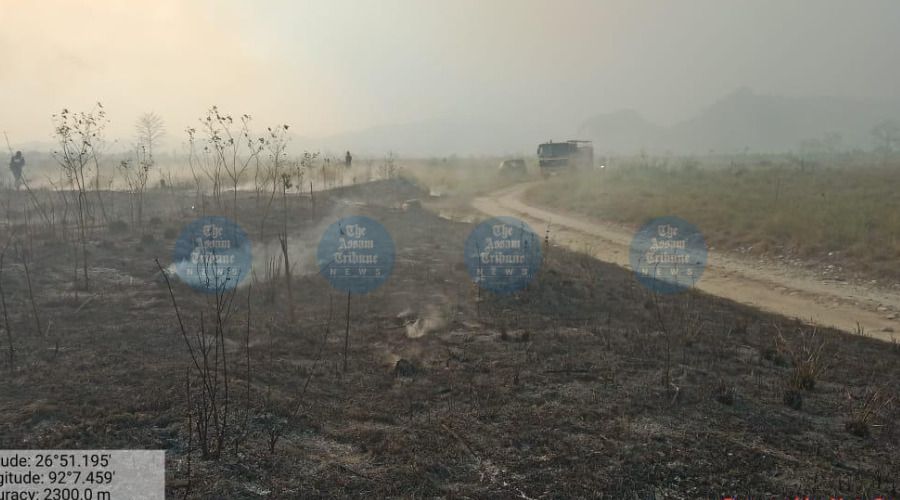
Guwahati, April 1: Barely one-and-a-half years after the state government made history by planting 9,21,730 saplings in a single day, the site of its record-breaking afforestation drive lies in ruins.
A devastating fire on March 9 reduced 100 hectares of the Bhairabkunda Reserve Forest in Udalguri district to ashes, wiping out what was hailed as a significant environmental achievement under the "Amrit Brikshya Andolan".
The ambitious plantation drive, conducted in September 2023, had earned Assam a place in the Guinness World Records.
However, instead of a thriving green cover of 53 commercially valuable tree species, the area now stands charred and lifeless.
According to the Forest Department, the fire was allegedly the work of miscreants. Officials, while requesting anonymity, told The Assam Tribune that they are yet to identify those responsible, and investigations are ongoing.

The barren land
Environmentalists, however, have raised questions about the feasibility of the plantation from the outset. Right to Information (RTI) activist Dilip Nath claimed that the government’s attempt to plant trees on barren land was doomed from the start.
“The 100 hectares where the plantation drive was carried out were barren lands. It was practically impossible to grow trees there. Regardless of who started the fire, such terrain made it easier for the flames to spread rapidly. Before the plantation drive was carried out, the forest department used to earn revenue from these lands through sand and rocks,” Nath said.
The financial implications of the failed project have also drawn scrutiny. According to an RTI reply from the office of the Principal Chief Conservator of Forests, the government spent an astounding Rs 3.13 crore on the initiative.

People trying to douse flames and smoke from the burning land
Between September 8, 2023, and July 31, 2024, saplings were acquired eight times in an effort to secure the world record for the Dhansiri Division in Udalguri district’s Mazbat range.
The incident has reignited debates over the effectiveness of large-scale government-led afforestation drives and the need for better fire prevention measures in vulnerable forest areas.